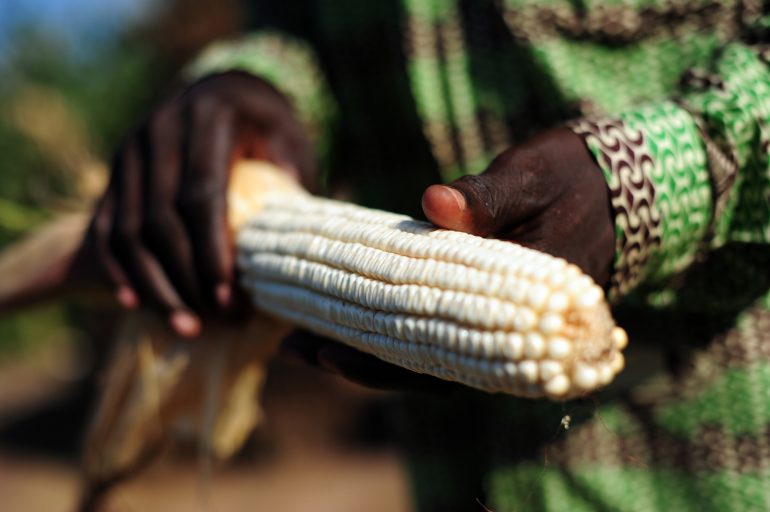A Capacity Approach To Climate Change Modeling: Identifying Crop Management Adaptation Options

In our study, we investigated to what extent far climate-change modeling can be used for identifying crop management adaptation options to climate change. We focused our analysis on a case study of maize production in southern Africa using the APSIM crop growth model (Agricultural Production Systems sIMulator) and projections from 17 individual climate models for the period 2017-2060 for the contrasting representative concentration pathways 2.6 and 8.5.
Our findings demonstrate that the identification of crop management-level adaptation options based on linked climate-crop simulation modelling is largely hindered by uncertainties in the projections of climate change impacts on crop yields. With uncertainties in future crop yield predictions of around 30 to 40% or more, many potential adaptation options to climate change are not identifiable or testable with crop-climate models.
First, the variation of climate predictions is high. Their accuracy is limited by fundamental, irreducible uncertainties that are the result of structural differences in the GCMs as well as different model parametrization and downscaling approaches. We found that different GCMs gave largely different results, without any clear pattern.
Second, there is also large uncertainty in simulating the responses of crops to changing climate because of the different structures, and input data and parameters of crop models. Besides, crop models often lack key processes (e.g., physiological plant responses to extreme temperatures) related to climate change impacts, as they were not built for this purpose. It is also evident that due to the limited capability of crop models in simulating effects of soil and crop management practices on crop yields, only a limited number of adaptation options could be informed.
A more successful approach for informing adaptation to climate change may be to begin with the decision-making context, assessing the existing capacities and vulnerabilities of farmers and their communities to climate change. This “capacity approach” does not require probability-based estimates of future climate, but rather a range of plausible representations that can help to better understand how the climate-related vulnerabilities can be addressed. Most of the decisions on crop management are made by the farmer in the context of his/her production objectives and farming opportunities and constraints. From there, farming options can be identified and proposed that are feasible and robust over a range of plausible climatic futures, without the need for detailed climate projections.
Furthermore, adaption to climate change is also entwined with socioeconomic drivers, such as globalization, economic and political priorities, and demographics. In fact, complexities in economic and social systems may outweigh climatic uncertainties in determining possible and feasible adaptation options. A general trend observed is that by diversifying their income sources, including off-farm income, farmers become less vulnerable to climate variability and change.
Whilst we argue that results from GCMs cannot be directly used for informing local-scale adaptation options, we do acknowledge that the use of ensembles of both climate and crop models in regionally- and globally-oriented impact studies can provide valuable information that can guide policy decision-making on agricultural adaptation to climate change at national and international scales.
These findings are described in the article entitled Can we use crop modelling for identifying climate change adaptation options? recently published in the journal Agricultural and Forest Meteorology. This work was conducted by Marc Corbeels, David Berre, Leonard Rusinamhodzi and Santiago Lopez-Ridaura from the International Maize and Wheat Improvement Center (CIMMYT) and the French Agricultural Research Centre for International Development (CIRAD).
Author: Marc Corbeels
Source: Sciencetrends.com
Reader Comments
Older articles

